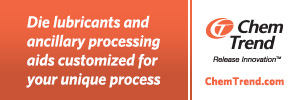For Restriction of Hazardous Substances (RoHS) compliance of all die casting alloys, it is recommended to obtain certification of restricted materials levels from your die caster or alloy supplier. The RoHS six restricted materials and concentrations are listed in the RoHS Restricted Material Concentrations Table below.
It should be noted that Annex 6 of the RoHS related Directive 2002/95/EC should not be applied to aluminum die casting alloys. Lead is not a purposeful alloying element in commonly used aluminum die casting alloys. Directive 2002/95/EC states the following: “Lead as an alloying element in steel containing up to 0.35% lead by weight, aluminum containing up to 0.4% lead by weight and as a copper alloy containing up to 4% lead by weight.”2 However, lead is a purposeful alloying element in some copper die casting alloys, so Annex 6 may be applicable to some copper die casting alloys.
RoHS Restricted Material Concentrations
| Material | Max Concentration % by weight in homogeneous materials |
|---|---|
| Lead (Pb) | 0.1 |
| Mercury (Hg) | 0.1 |
| Hexavalent Chromium (Cr-VI) | 0.1 |
| Polybrominated Biphenyls (PBB) | 0.1 |
| Polybrominated Diphenyl Ethers (PBDE) | 0.1 |
| Cadmium (Cd) | 0.01 |
References:
- 2005/618/EC: Commission Decision of 18 August 2005 amending Directive 2002/95/EC of the European Parliament and of the Council for the purpose of establishing the maximum concentration values for certain hazardous substances in electrical and electronic equipment (notified under document number C(2005) 3143, EURLex, http://eur-lex.europa.eu 2008.
- Directive 2002/95/EC of the European Parliament and of the Council of 27 January 2003 on the restriction of the use of certain hazardous substances in electrical and electronic equipment, EURLex, http://eur-lex.europa.eu 2008.








